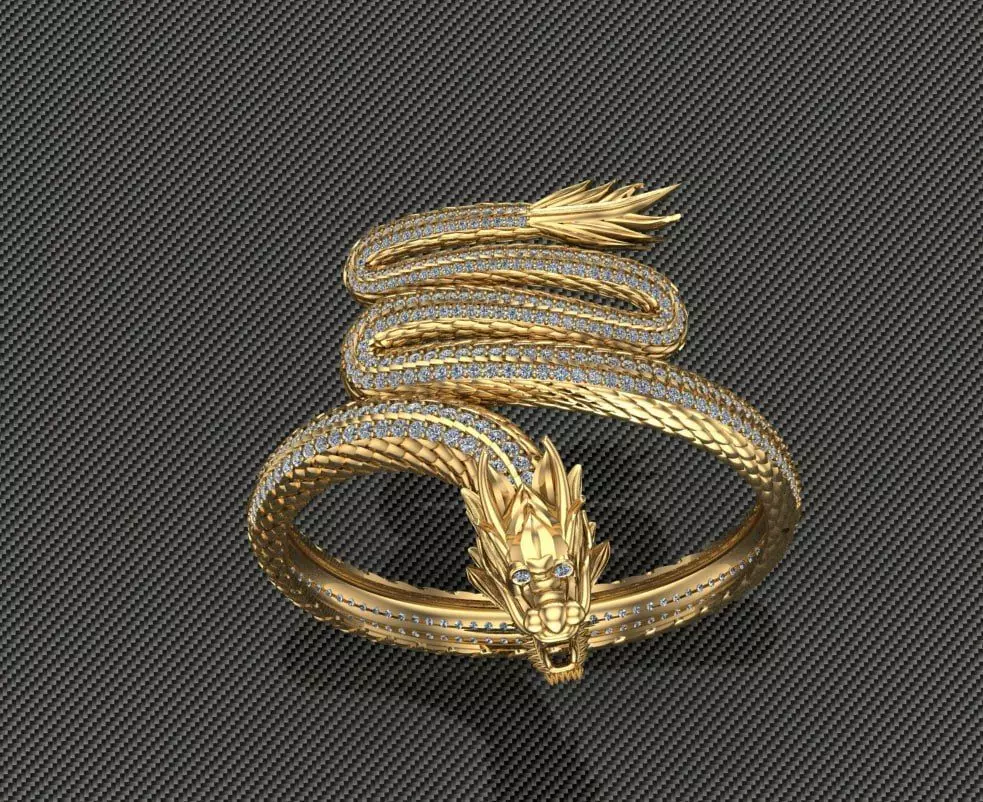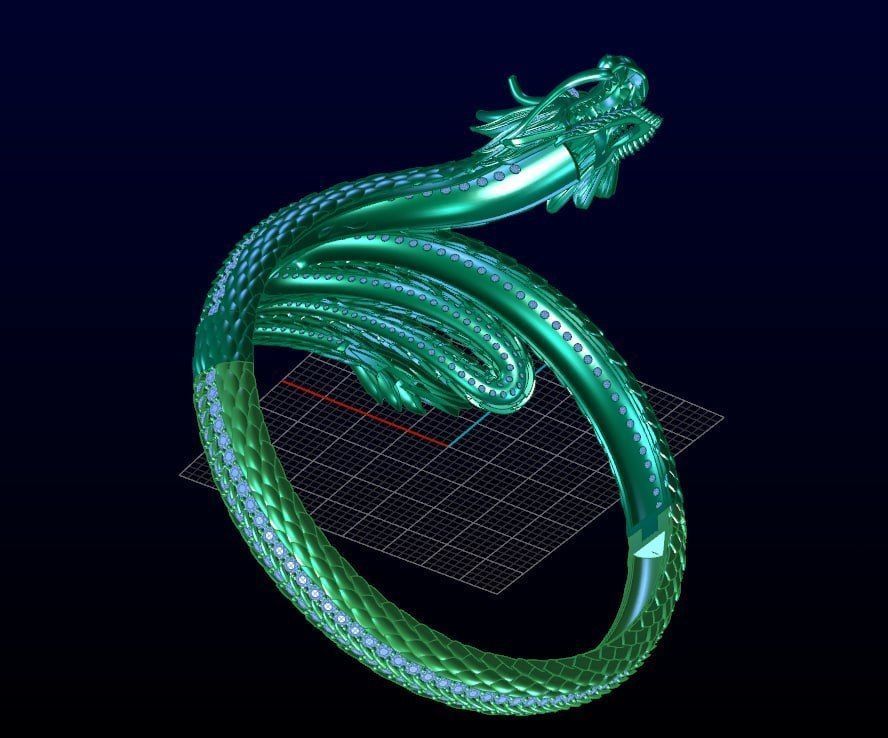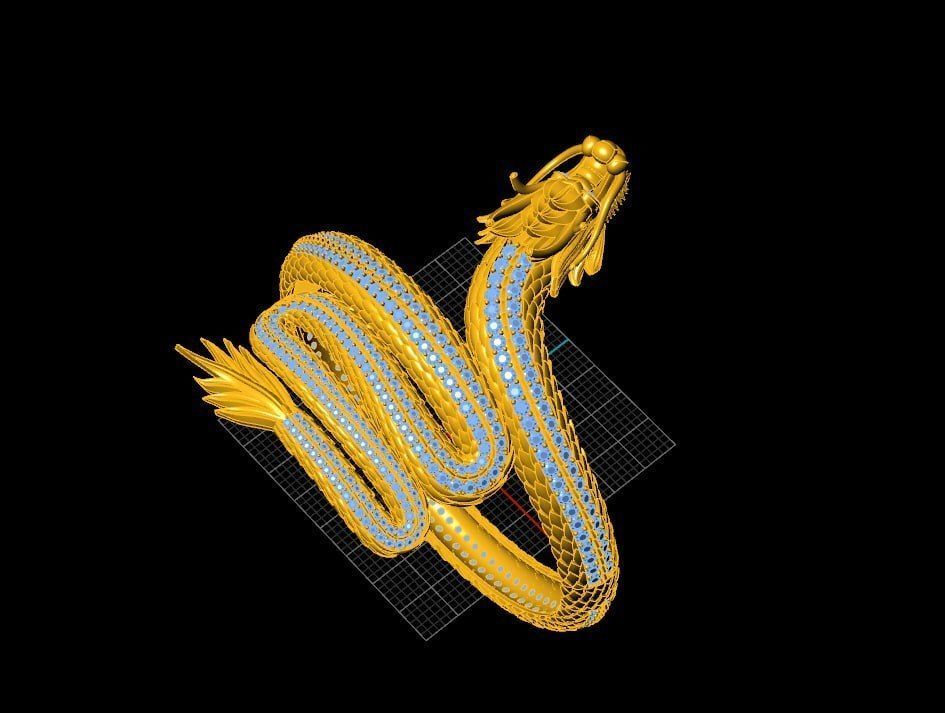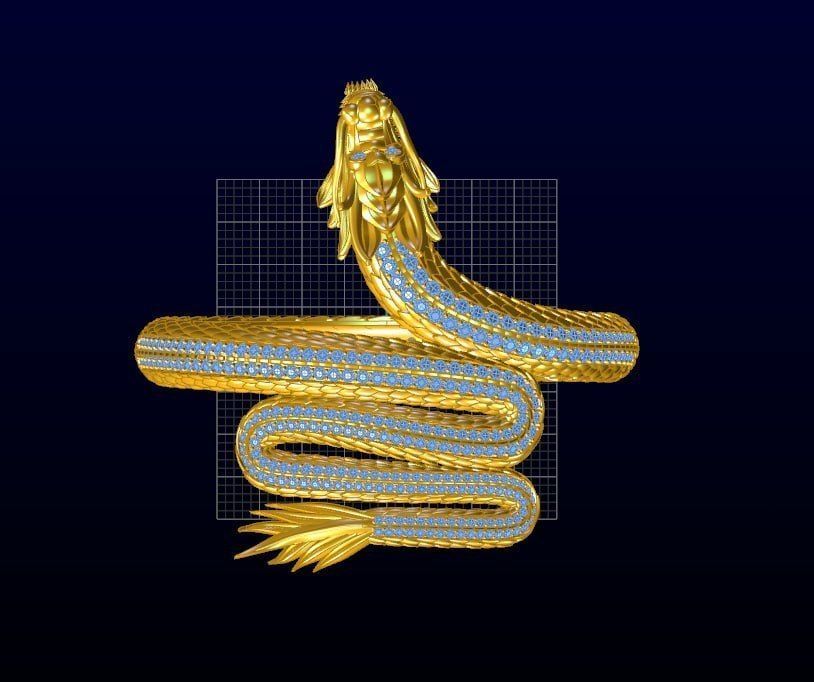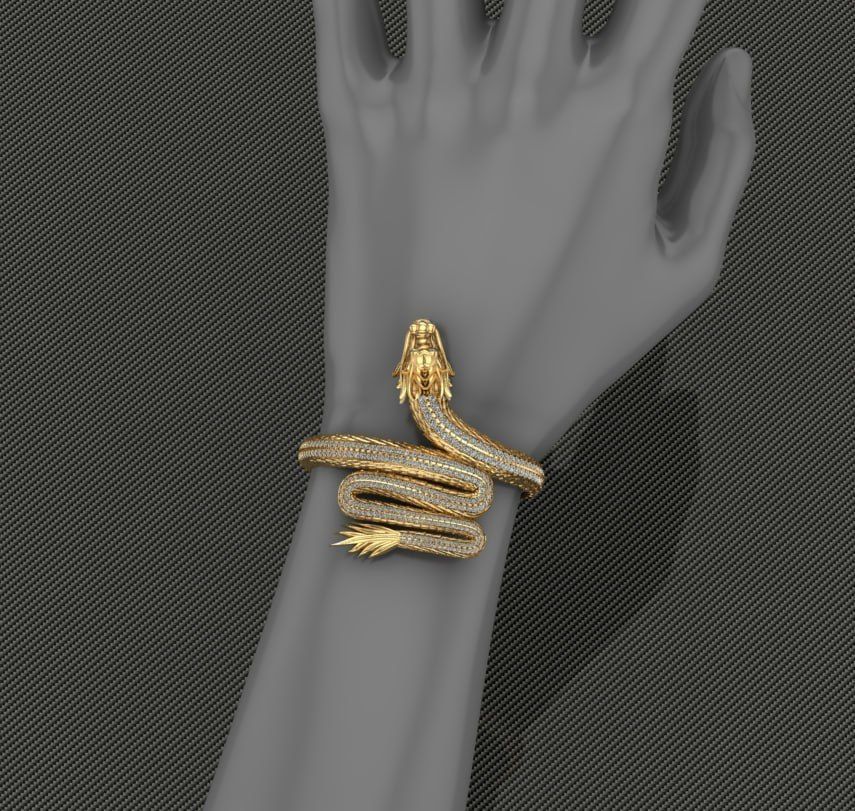
Dragon bracelets 3D print model
Not to be confused with Dragon lizard, Komodo dragon, Draconian, Dracones, or Dragoon.This article is about the legendary creature. For other uses, see Dragon (disambiguation).
Illustration of a winged, fire-breathing dragon by Friedrich Justin Bertuch from 1806
Qing-era carved imperial Chinese dragons at Nine-Dragon Wall, Beihai Park, Beijing
Dragon-shaped bows on ships in Ystad, Sweden, resembling Viking longshipsA dragon is a magical legendary creature that appears in the folklore of multiple cultures worldwide. Beliefs about dragons vary considerably through regions, but dragons in Western cultures since the High Middle Ages have often been depicted as winged, horned, and capable of breathing fire. Dragons in eastern cultures are usually depicted as wingless, four-legged, serpentine creatures with above-average intelligence. Commonalities between dragons' traits are often a hybridization of feline, reptilian, mammalian, and avian features. Some scholars believe large extinct or migrating crocodiles bear the closest resemblance, especially when encountered in forested or swampy areas, and are most likely the template of modern Asian dragon imagery.[1][2]
Etymology
An early appearance of the Old English word dracan in Beowulf[3]The word dragon entered the English language in the early 13th century from Old French dragon, which, in turn, comes from the Latin: draco (genitive draconis) meaning huge serpent, dragon, from Ancient Greek δράκων, drákōn (genitive δράκοντος, drákontos) serpent.[4][5] The Greek and Latin term referred to any great serpent, not necessarily mythological.[6] The Greek word δράκων is most likely derived from the Greek verb δέρκομαι (dérkomai) meaning I see, the aorist form of which is ἔδρακον (édrakon).[5] This is thought to have referred to something with a deadly glance,[7] or unusually bright[8] or sharp[9][10] eyes, or because a snake's eyes appear to be always open; each eye actually sees through a big transparent scale in its eyelids, which are permanently shut. The Greek word probably derives from an Indo-European base *derḱ- meaning to see; the Sanskrit root दृश् (dr̥ś-) also means to see.[11]
Historic tales and records
Several bones purported to belong to the Wawel Dragon hang outside Wawel Cathedral, but actually belong to a Pleistocene mammal.Draconic creatures appear in virtually all cultures around the globe[12] and the earliest attested reports of draconic creatures resemble giant snakes. Draconic creatures are first described in the mythologies of the ancient Near East and appear in ancient Mesopotamian art and literature. Stories about storm-gods slaying giant serpents occur throughout nearly all Near Eastern and Indo-European mythologies. Famous prototypical draconic creatures include the mušḫuššu of ancient Mesopotamia; Apep in Egyptian mythology; Vṛtra in the Rigveda; the Leviathan in the Hebrew Bible; Grand'Goule in the Poitou region in France; Python, Ladon, Wyvern and the Lernaean Hydra in Greek mythology; Kulshedra in Albanian Mythology; Unhcegila in Lakota mythology; Jörmungandr, Níðhöggr, and Fafnir in Norse mythology; the dragon from Beowulf; and aži and az in ancient Persian mythology, closely related to another mythological figure, called Aži Dahaka or Zahhak.
Nonetheless, scholars dispute where the idea of a dragon originates from[13] and a wide variety of hypotheses have been proposed.[13]
